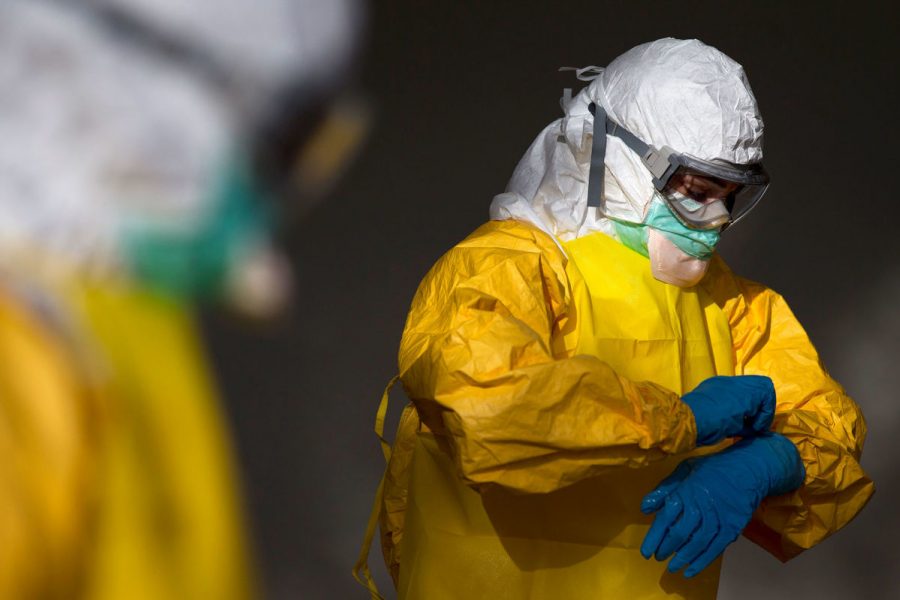Consider some of the biggest stories of the past few months. ISIS on the rise, Ebola in the United States. Before that? The Ukraine in peril. Before that? North Korea threatening the world with new missiles. But which of these stories is still fresh in everyone’s minds? Depending on who you are and what you view as significant, it could be any, all, or none of them. But depending on which media outlets one subscribes to, one may be led to think that these things would be a nonissue now.
The prevalence of yellow journalism, and exaggerated claims of imminent destruction that are perpetrated when describing a new threat, not only cause undue fear in the minds of readers, but also destroys the context of any aftermath, once the immediate story has run its course.
There have already been numerous discussions of how yellow journalism, the exaggeration of facts or the implications of facts within a news story for the purpose of inducing fear, outrage, or shock in an attempt to increase viewership or promote an agenda, has been present in most modern forms of media for decades. Generally, discussion of its detrimental effects will usually revolve around how it can misinform readers, disrupt reasoned debate or generate unnecessary panic.
On the subject of exploiting a story for the purposes of baiting in viewers, the reporting on Ebola in the U.S. is a perfect example, because not only did it cause unnecessary concern over false or misleading claims about the potential for widespread epidemic, but the resulting calm has undermined the actual concerns that Ebola still poses.
The spread of Ebola in Africa is beginning to wind down, largely due to effective quarantines and volunteers providing treatment to those afflicted, but this does not mean that its continued existence no longer merits any form of recognition. This is quite possibly due to the fact that a few months ago, when the first cases of Ebola appeared in the United States, there were many in the media who would have their viewers believe they would soon be infected with the disease, despite almost every expert claiming the contrary. Now that this apocalypse has, surprisingly, not come to pass, the mention of Ebola in Africa would certainly seem somewhat unimportant. So much time was spent building up a vision of a future epidemic occurring in the United States, which few, if any, in the medical field believed would ever come to pass, that when it inevitably failed, the self-proclaimed prophets of imminent destruction moved on, as if Ebola was a nonfactor. Now clearly there are many who feel otherwise, regardless of whether their efforts remain “news worthy” or not. They will, of course, continue in their efforts, regardless of their perceived importance, or lack thereof, as well they should.
Yet now, it would seem as if these efforts were residual, as the threat of Ebola no longer seems so direct, and thus cannot bleed anymore to lead. This is not to say that the topics present in the most recent stories are not important, but rather that so many are treated as “breaking news” that the implicit context of such a designation no longer carries any relevance. Yellow journalism is thus not only in its reporting, but also in how audiences come to understand the context of the issue, even when a media outlet no longer constantly reports on it.
Boosting ratings, paper sales or views through manipulating the amount and magnitude of information put forth on a story, with the intent of scaring or shocking a reader, only supports those who peddle it.
Certainly, these providers could make the argument that their stories require certain slants in order to gain a reliable source of income from viewers, especially when the future of print media is so unknown. But the obvious response is that there is no purpose in supporting a news organization that does not present accurate information in the first place.
In their attempts to justify the necessity of spin or exaggeration, they forgo any benefit they could provide their audience, as they display more concern over the increasing monetization of news outlets over concerns for accurate and honest reporting. This is not to say that news outlets bear sole responsibility of determining what crisis warrants attention, and for how long. It is the opinion of this editorial writer that the task of deciding what is important and what the response should be, is ultimately reserved for each individual human being. Where they go from there, and perhaps where they should go, are entirely different topics. But the fact remains that yellow journalism is not only dishonest in how it portrays an event, but also how it poisons understandings of context.
(photo by Brynn Anderson / AP, via)







































































































